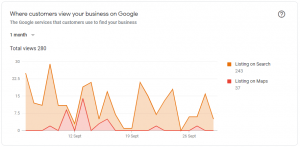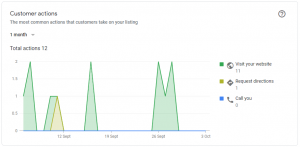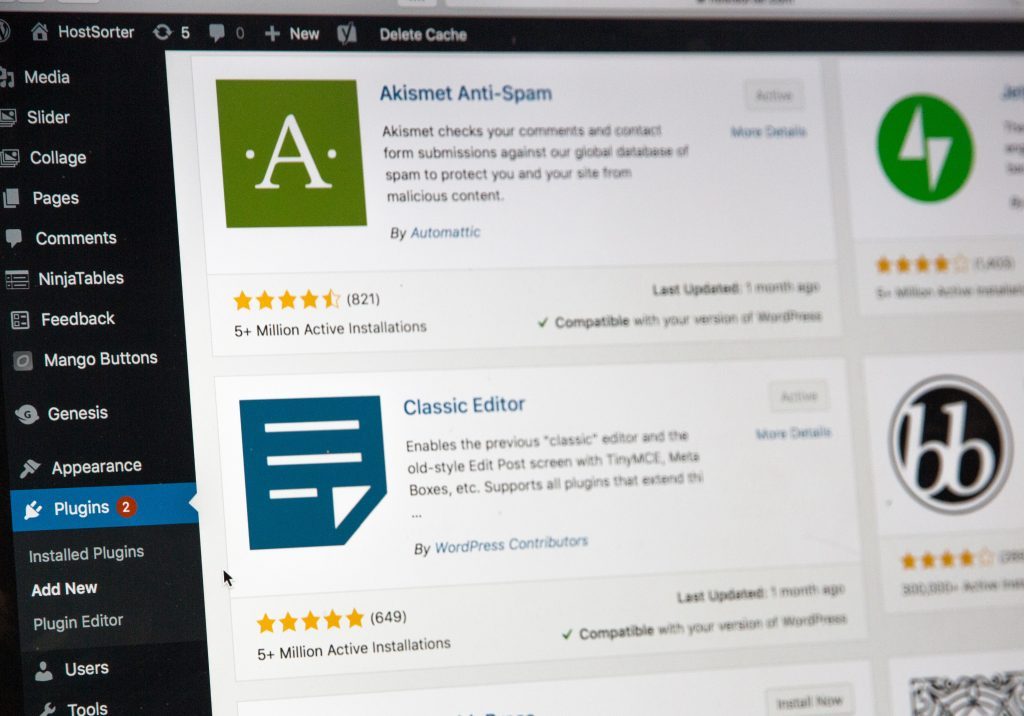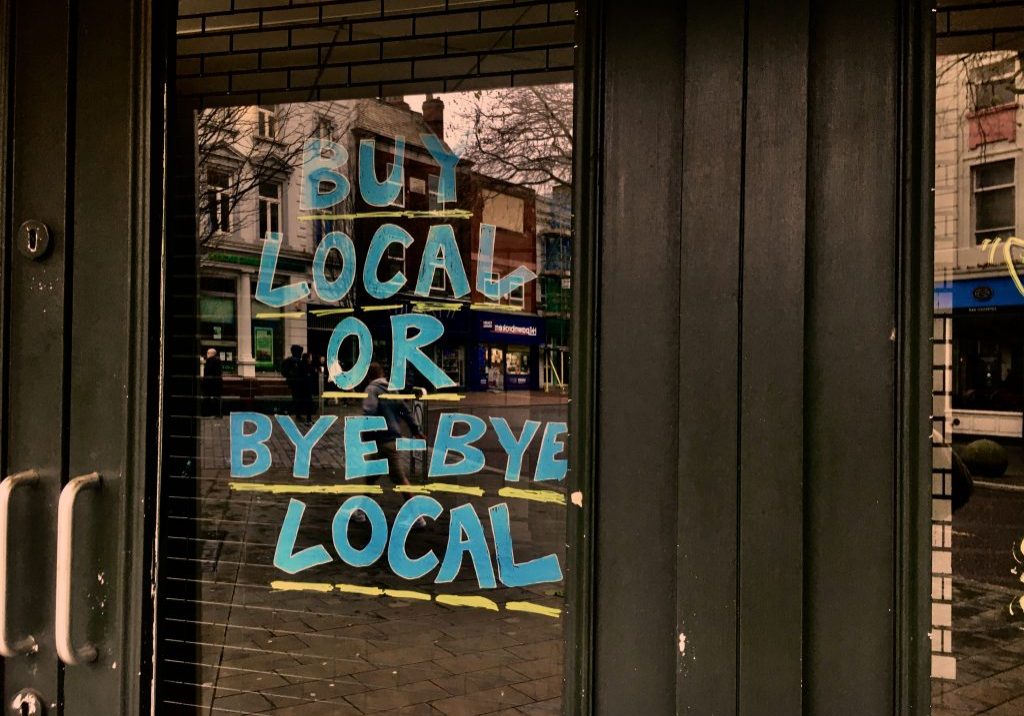Wanting To Rank In Google’s MAP Pack? Here’s A List Of The Major Ranking Factors Google Use…
If your business provides services or products within a specific geographical location (such as Sheffield, for example) then Local SEO should be high on your list of marketing channels. Local SEO is all about optimising your website (or online presence for that matter), to show in Google’s MAP Pack. If you’re unfamiliar with Google’s MAP Pack, it’s the top three results displayed, alongside a map, whenever users make a ‘Service in Location’ search.
As search shifts towards mobile, MAP Pack results will become even more important. Firstly, they’re prime real estate on Google’s results pages, as they effectively displace traditional organic listings (including the #1 result!) and secondly, they’re going to be shown more often, as Service in Location search grows in popularity. Don’t believe us? Well, Google has pushed location based ads over recent months, something which signals to any digital savvy business owner that the MAP Pack and Local SEO are here to stay.
Whilst Local SEO shares some similarities with your regular, old school search engine optimisation there are some key differences, particularly in off page ranking factors. If you’re not too sure where to concentrate your efforts, don’t worry, we’ve got you covered. Have a read if you want to discover Google’s local SEO ranking factors and how best to use them…
Google My Business Profile
Google My Business is a free tool that helps you manage your reputation online, particularly in Google SERP’s. There are a few ways you can set yours up, either by claiming an existing listing, or by setting up a new profile; either way, all you really need to get started is a GMail (or Google Mail for the oldies) account.
If you’ve ever searched for a business locally you’ll be familiar with how Google My Business (GMB) displays, if you’re not, here’s a breakdown of the information you can provide to complete your listing:
- Business Name
- Primary Business Category
- Additional Business Categories
- Business Address
- Service Areas
- Opening Times
- Telephone Number
- Profile Short Name
- Web Address
- Appointment Link
- Products
- Services
- Business Attributes
- Business Description
- Opening Date
- Photos
Not all of the above will be relevant to your business. Take the Business Attributes section, for example, this is used primarily for letting customers know about the facilities at your business, such as disabled access, gender neutral toilets or health and safety features. Our recommendation is to complete as many elements as you can, particularly the Business Name, Address, Telephone Number and Web Address.
Most of the information sections on GMB are self explanatory, but a few are a little more obscure, here’s a brief outline of those fields you may not be familiar with:
Primary Business Category (& Additional Business Categories)
The Primary Business Category (& Additional Business Categories) is your opportunity to let would be customers know what you offer, from a predefined group selected by Google. When selecting your categories Google will ‘predict’ your category based on your text (such as ‘Marketing’ if you were to type ‘Mar…’), which should make choosing the right categories a little easier.
Don’t worry, most of the categories offered by GMB are very similar to those offered elsewhere, such as Yellow Pages, so you’ll more than likely find one that suits your business. Tip: Whenever possible, try matching your GMB categories to those elsewhere online, such as in Local Citations.
Profile Short Name
Think of your Profile Short Name as the ‘Handle’ of your Google My Business page, similar to those on Facebook Pages and Twitter. The Profile Short Name isn’t something you should sweat about, it simply helps customers find your GMB specifically, which can be used on business cards, for example. However, in most cases, it’s pretty much redundant.
Appointment Link
The Appointment Link field can be a great way to drum up business, directly from local search. Here, you can add a specific url (from your website) which gives users the ability to book an appointment or make a reservation. With this in place, Google users can click through and book much more quickly than through ‘traditional SEO’, navigating through your website and finding your all important booking page.
Business Attributes
We’ve covered the Business Attributes element a little further up the page, but we thought it would be helpful to outline the key areas you can update, to give you an idea of what extra information you can give to your customers, which could encourage them to visit your physical premises.
- From The Business
- Accessibility
- Amenities
- Health & Safety
- Highlights
- Service Options
How Do I Measure The Impact Of Google My Business Listings?
Google offer ‘Insights’ on your Google My Business listing, straight from the main menu. It’s pretty simple stuff, which wont offer as much value as Google Analytics or Google Search Console (if you’re serious about SEO), but it can be a good snapshot of your business and how it performs in local search. Here’s what the first element of Google My Business Insights looks like;
How Customers Search For Your Business

‘How Customers Search For Your Business’ essentially highlights the way people get to your Google My Business listing, via Google search. ‘Discovery’ can be a good indicator of new customer acquisition, as it highlights those that have found you by searching for services like yours.
Don’t overlook ‘Direct’ numbers either, these can help measure the success of your other marketing efforts. If you’ve been running print advertising for example, this could drive users to search for your business online, something which the ‘Direct’ metric would show at a glance.
Where Customers View Your Business On Google

This metric can help you quickly assess the success of your Local SEO and ‘Regular’ SEO, with Listings on Maps and Listings on Search pretty much representing the success of the two avenues of SEO respectively.
Customer Actions

‘Customer Actions’ can be a valuable metric for businesses with a physical presence (rather than service or e-industries which are predominantly online), giving you an overview of what your customers are doing once they find your business listing. It can be useful to see how many people are calling or visiting, which can help you more accurately measure the success of your marketing efforts, which, if not purely digital, can sometimes be difficult to track.
Do I Need A Google My Business Listing?
Yes! Moz ranks Google My Business listings as the biggest ranking factor in local SEO. In fact, it suggested that GMB signals accounts for over 25% of all MAP Pack listings, giving it more importance than your website and content.
Your NAP
Your NAP (Name, Address and Phone Number) helps Google determine your location and proximity to users. The key to an effective NAP is consistency; making sure your details match sitewide.
We’ve talked about NAP before when looking at Optimising Your Website For Local SEO which is also worth a read. Our recommendation is to include your NAP on both your contact page (with a map too) and your footer if possible.
Local Citations (& Your NAP)
Sure, you can tell Google where your business is, but how do they believe you? Local Citations (a fancy name for business listings) such as Yellow Pages, Free Index and Cylex signal to Google that your business 1) exists and 2) is in the place they think it is.
With this in mind (and we know we’re repeating ourselves), it’s vital to ensure consistency over all your Local Citations! When updating your listings, try not to deviate from the details you have on your website (i.e. your NAP) and Google My Business listing. (Not sure where to register your business? We’ve got a a list of Sheffield’s best business listings that should help).
Online Reviews
Online reviews, predominantly via Google My Business can impact your Local SEO. Don’t shy away from opening up to reviews, as long as you’re confident in your business and the level of service it provides you’ll accrue more good than bad along the way.
Google provides a direct link to the review section of your GMB which you can give to customer ‘post service’ to help build reviews, be sure to make use of it and leave a reply wherever possible, to signal to Google that you have an active, positive business.
Don’t worry if you struggle with GMB reviews, other online reviews are said to play a part in Local SEO ranking, so you could build reviews on other sites such as Yell. We’d recommend building reviews across your entire online presence, with a bias towards GMB.
On Page Content (Your Website)
Is your website tailored to local service? If not, it should be, if you’re main goal is to win at Local SEO. As we’ve mentioned before, even if you service wider areas (including nationally or internationally) it’s worth creating local area landing pages which will help connect your website with local search.
This doesn’t have to be a keyword stuffing exercise, filling your website with ‘my services in your area’ terms, just a few tweaks here and there should do the trick and remember; always write for your reader, not for Google!
The Wrap Up
No matter whether you’ve mastered traditional SEO or not, you can’t afford to ignore local. As Google roll out even more location based ads, it’s clear that the future of Google SERP’s will rely heavily on user locale.
What struck us is that On Page Content is way down the pecking order when it comes to the ranking factors of Local SEO! It seems Google favours off page signals when determining their top three MAP Pack results. In some respects this gives those with less development and copywriting skills to prosper, however, we’re still a little skeptical as it makes sense that at some point, Google needs to prioritise local landing pages, in order to determine the user experience. After all, if rankings were determined by off page signals only, then how would they know which sites users will like the most? Google has always been big on user experience; we’d love to hear your thoughts on this! (Hit us up on social).
As always, if you’ve enjoyed reading this, please don’t forget to share it with your network, using the icons left, or below.









